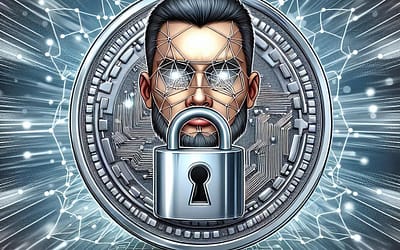The gravity of the world's economic health can often be measured by its most significant dips and dives. The term that immediately comes to mind is 'recession,' a dreaded phase for economies worldwide. But how does one identify the endpoint of this economic downturn? And what occurs after it ends?
Understanding The Economic Downturn
A recession is a significant decline in economic activity that lasts more than a few months. Generally, it's visible in real gross domestic product (GDP), real income, employment, industrial production, and wholesale retail sales. The National Bureau of Economic Research (NBER) defines it as a significant decrease in economic activity spread across the economy, lasting more than a few months.
Recessions are part of the business cycle, which encompasses expansion, peak, recession, trough, and recovery. Recessions can be caused by various factors, including financial crises, external shocks, and the bursting of economic bubbles. While its impact on different sectors can vary, it generally leads to a rise in unemployment, a decrease in consumer and business spending, and a decline in stock markets.

Inflation, deflation, or stagflation can also occur during a recession, depending on the economic conditions. In certain severe cases, a recession can escalate into a depression, a prolonged period of economic decline where unemployment remains high, and the production of goods and services significantly drops.
Navigating Through A Recession: Identifying The Signs
Recognizing the signs of this economic downturn can help policymakers take preventive actions. Some warning signals include a significant decline in real GDP, a decrease in key economic indicators like housing starts, and a rise in unemployment rates. Another common sign is the yield curve inversion, where long-term interest rates fall below short-term interest rates, indicating a lack of confidence in the economy’s health.
Additionally, a slowdown in manufacturing, visible through the Purchasing Manager's Index (PMI), declining business and consumer confidence, and tightening credit conditions are robust signs of an impending recession. More subjective signs can include a sense of economic uncertainty or pessimism among businesses and consumers.
Economic indicators are vital tools for predicting recessions, but they are not foolproof. Economists often disagree on which indicators are most reliable, and even the most trusted measures can occasionally send false positives which can oftentimes confuse the masses who don't know any better. And because the news can be conflicting, consumers often give up and ignore the entire subject completely.
The Light At The End of The Tunnel: Determining The Endpoint
Identifying the endpoint, or the moment when an economic downturn officially ends, is not always straightforward. The NBER, which also officially declares the beginning and end of recessions in the United States, typically waits until there's clear evidence that an economic recovery has begun. They often use the same factors that determine a recession—such as real GDP, income, employment, and sales—to identify its end.
There can still be disagreement among economists about when a recession has officially ended, largely due to the complex nature of economic cycles. It's also important to note that the end of a recession doesn't necessarily mean a swift return to economic growth. Rather, it signals the beginning of the recovery phase, which can still involve a significant amount of economic distress.
Always remember the markets are cyclical. Just like the weather you'll have your winter, spring, fall, and summer months. Before you and I were born, the global markets have continued in their seasons, and this time isn't different. The only difference as far as I'm concerned is that more people are becoming a little more aware of the economic and geopolitical circumstances, and how their impact is being felt.
Post-Recession Recovery: What Occurs After The Downturn Ends?
Once a recession ends, the economy enters a recovery period. During this phase, GDP starts growing again, unemployment rates begin to fall, and consumer and business confidence slowly start to rebound. This period is often characterized by a period of stabilization and gradual improvement.
However, the pace and strength of the recovery can vary considerably. Some economies bounce back quickly, in a V-shaped recovery, while others take a longer time, often depicted as a U-shaped or an L-shaped recovery. In some cases, economies may experience a double-dip recession, where the economy briefly recovers, only to fall into another.
Post-recession, policymakers typically engage in strategies intended to boost the economy. This can include fiscal policies like increasing government spending or cutting taxes, or monetary policies such as lowering interest rates or increasing the money supply. The goal is to stimulate economic activity and prevent future recessions.
Understanding when a recession truly ends is a complex task, requiring a careful analysis of economic indicators, trends, and sentiment. The end does/t instantly signal a booming economy; instead, it marks the start of a recovery journey, the speed and strength of which can differ significantly depending on various factors. As we navigate through economic downturns and recoveries, it is crucial to remember that recessions are part and parcel of the business cycle. They represent challenging times, but they also serve as opportunities for learning, improvisation, and building a resilient economy for the future.
Matt is the founder of TechMalak. When he's not buried face-deep in the crypto charts you can find him tinkering with the latest tech gadgets and A. I tools. He's a crypto investor and entrepreneur. He uses a mixture of A.I and human thought and input into all his articles on TechMalak, further merging man with machine.





